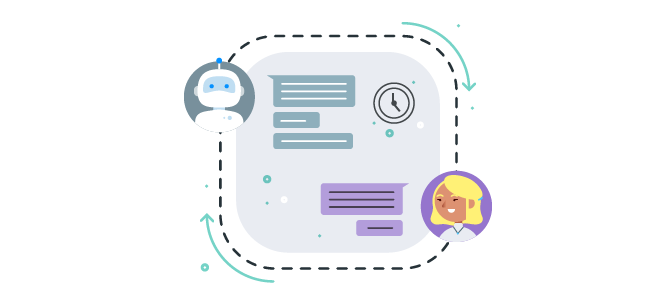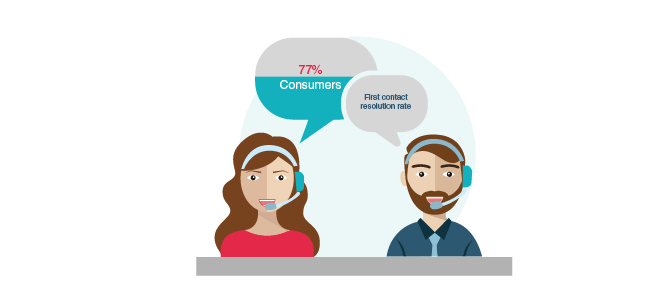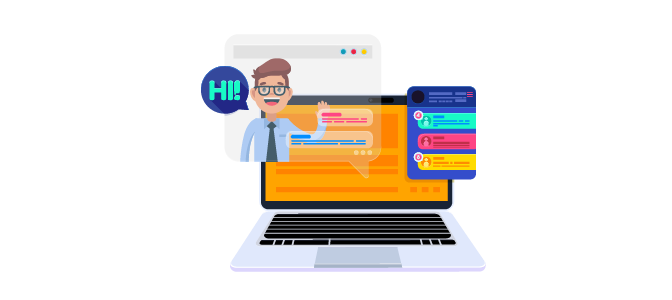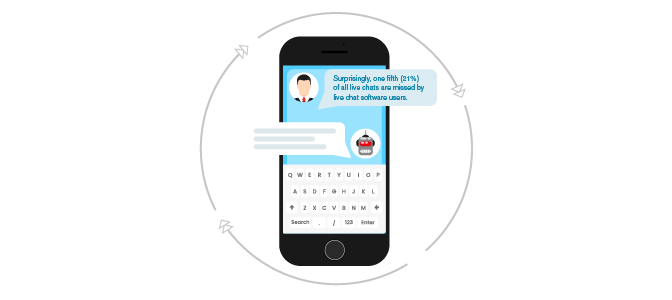9 live chat software metrics (KPIs) for measuring performance
Offering a live chat service on your website is advantageous. With free live chat software, it’s easier than ever to do so.
Plus, live chat software carries some significant benefits. Research shows that 79% of companies that offer live chat say that it has a positive impact on sales, revenue, and customer loyalty.
That same research shows us that live chat is the favorite communication method for the majority of consumers. More people prefer live chat for customer support than telephone, email, or social media.

Source: kayako
But how do you know if you’re leveraging your live chat software to the fullest and maximizing the benefits it provides?
Live Chat Software Metrics
Measuring key performance indicators (KPIs) helps companies continually improve their live chat function. That’s why we’ve compiled a list of the nine most crucial live chat metrics that you should measure on a regular basis. Let’s dive in.
1. Average wait time

Measuring how long customers must wait for a response is key to maintaining high levels of customer satisfaction with your chat service. If a customer or prospect comes to your website and a chat window pops up, it’s vital that any question they pose via chat is answered quickly.
If they have to wait more than a few minutes, they will grow impatient. If they enter a question and it is not responded to at all, they will leave with a bad taste in their mouth, and it will start generating bad reputation for the company.
The bottom line is that if you offer online service with live chat software, you should ensure that there are always enough chat agents available to field incoming questions.
2. Average chat duration
How long does it take, on average, to wrap up a live chat? Average chat duration across industries hovers at around 11 to 12 minutes.
It’s important that agents are devoting enough time and attention to resolve an issue on the first try (more on that below). They often need to spend a few minutes understanding the problem before they can offer a solution.
If average chat duration is too low, it may be an indication that not enough time is being devoted to resolving issues. It is also likely to impact customer satisfaction rates negatively.
If chat agents are taking too long to resolve issues, it could indicate that agents need additional training or guidance to address issues quicker.
3. Total number of chats per day

When you use live chat software on your website to offer support, you’ll have to accurately gauge how many agents you need to man the ship. Measuring the number of total chats that are raised by visitors each day tells you how many agents are required.
It’s important to keep tabs on this metric and grow your agent pool if chat volume increases. Failing to do so will result in longer wait times and slower response times.
4. Customer satisfaction by agent
If your live chat software is part of a broader,all-in-one CRM solution, it may also provide you with the ability to deliver surveys online. If so, you should leverage these to gain feedback and measure customer satisfaction with each agent’s performance.
If some agents are generating high satisfaction levels while others are not, it is probably time to dig in and understand why. Doing so will help you identify performance issues and ensure that each rep is fully equipped and capable of generating maximum satisfaction through your live chat presence.
5. First contact resolution rate

First contact resolution (FCR) rate refers to the percentage of live chats that are fully resolved on the first try, without needing to escalate the issue and get back to the customer. Ideally, the vast majority of issues will be resolved on the first try.
If your FCR rate is low, it could indicate that certain agents need additional product training to deliver better service via your live chat software.
According to Forrester Research, 77% of consumers feel that valuing their time is the single most important thing a business can do when delivering online customer service.
If your FCR rate is low, look into it. To be sure, fully resolving issues on the first try is more important than resolution speed.
6. Conversion rate
If you use live chat software, you can leverage it for lead generation as well. Prospects that come to your website and ask a question are apparently interested, and this is an excellent opportunity to engage them.
Arm your support reps with the value prop of your product and teach them how to pitch it from a sales perspective. Teach them to speak in terms of benefits rather than features.
When agents can generate new leads for the company, revenue will grow. Measuring how many new visitors are converted into customers will help you determine how active your agents are at pitching your product or service.
Related Blog: 13 best practices for increasing lead conversion rates
7. Length of post-chat wrap-up

After a chat, there are various things that an agent may need to do in your live chat software solution to process the interaction. This could include entering new lead contact details in your CRM, entering notes about the exchange, and so on.
Measuring how long it takes your agents to close one chat and become available for the next helps ensure that this post-chat wrap up takes place quickly. If agents are taking too long to wrap up, it probably means that you should be automating more steps of the process to increase efficiency.
8. Use of canned responses
The best live chat software systems will provide you with the ability to leverage canned responses.
These are pre-drafted responses to commonly asked questions that can be triggered when those questions are asked.
Canned responses speed up resolution times and allow agents to close more chats in less time.
If you have canned response capability, but they are not being used, it’s likely an indication that you need more responses or that reps need additional training on how to use them.
9. Missed chats

Missing a chat is one of the worse things that can happen. The purpose of live chat software is to make you more available to customers and prospects. Missing chat conversations have a significantly negative impact on your reputation and your bottom line.
Surprisingly, one fifth (21%) of all live chats are missed by live chat software users. Missed chats are missed opportunities to engage customers and prospects. If your team is missing a lot of chats, you probably need to hire more agents or better train the ones you already have.
Conclusion
Live chat software can help you increase customer satisfaction, generate new leads, and convert more prospects into customers.
The trick lies in using your live chat software to the fullest of its capacity. And doing so relies on a regular measurement of KPIs to ensure agents are fully equipped to close more chats in less time and pitch your product to prospects.
Following the tips above will help you raise your game when it comes to live chat. If you’re not using live chat software, you should look into it, especially given all the free options available.
Do you measure another metric that you find particularly helpful and insightful? Let us know in the comments section below.

No Comments